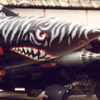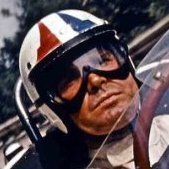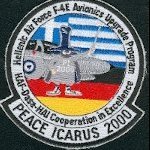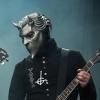Search the Community
Showing results for tags 'F-15J'.
-
Wow! Next big surprise after the Fine Molds F-14 Tomcat Source: Hobby Search Japan: http://www.1999.co.jp/eng/10321319 - Mainstay fighter of the Air Self-Defense Force to protect the empty Japan [F-15J Eagle] is, appeared long-awaited. - A has been reproduced in full new mold Eagle, Platts is I will send you with confidence! [Main Features] - Completely new mold - Accurately modeled to detail by the actual coverage - Airframe shape faithfully reproduce the actual every detail - Split the parts engine nozzle committed to detail - Mold of panel line is reproduced in delicate and sharp - Armed sets such as AAM-3 AAM-3,99 Expressions air-to-air guided missile AAM-4 - Zo-so 3 pcs set the 610 gallons tank - It can reproduce the # 305 Squadron in 2013 against competition machine - Current of each unit mark and details caution data is reproduced in the decal - Platts made unpainted plastic model kit ( This is a machine translation. Please allow for possible misinterpretations in the text. )
-
I think I need to get back to Straight from the box builds from time to time just to enjoy the building and finishing. Too many projects have been lost to waning enthusiasm of the extra detailing. This was a nice build of a very old kit but it still presents a nice representation of the Eagle. Some care is needed around the intakes and the point where the front and main fuselage join. The only aftermarket were Platz decals that were sourced online from a Japanese Hobby retailer. Comments always welcome, and thank you for having a look.
- 11 replies
-
- 49
-

-
Needing a kit to have fun with and hopefully minimum fuss. Trying to keep it in the spirit of building of just the kit supplied parts. Oh how easy it is to start browsing the web shops and fill your cart up with resin and etching. Most of my early modelling was a box build and even kit decals. A community friend gifted the kit to start and it was a boxing I did not recognize but the old reliable Hasegawa re-tooled F-15 was inside. No I couldn't hold back and found the Platz White Dragon release of 303 squadron's F-15J, a beautiful sheet printed by Cartograf. Does anyone think this looks like me!?!?! The Platz sheet, still available by searching on Japanese web-stores. The wing join seams were filled with stretched sprue but still required some Tamiya White Filling Putty. The vertical tail join line needed fill too. Actually a decent cockpit representation is provided but all references I could see showed the aft bay behind the seat was finished in white not the Metallic Blue-Green as instructed. The exhaust is 5 segments and maybe the biggest challenge is getting a proper looking circle of that opening as it is all glued. Patience and a cardboard circle template works using an Olfa circle cutter. Four external fuel tanks are included and I will be installing only the center tank. After a disappointing result with the first tank, I started a second tank, removed the locating pins and tried to be as careful as possible in alignment to prevent a large flat spot on the join line. Still a noticeable flat spot, I taped off the area and applied a liberal amount of the Tamiya White Putty, sanded and it seemed to look much better. Canopy was dipped in Pledge floor wax today so I will let it sit several days before masking and painting. Painting should only be a few days away and I have both the Light and Dark Ghost Gray in Mr Color and Tamiya Lacquer. Thank you for looking in, any comments welcome. Craig
-
I just added the Hasegawa 305SQ, 40th Anniversary F-15J to the stash. I was very much taken by the markings and got the kit with MBK's 20th anniversary discount. The decal sheet is splendid, but I wonder if anyone has any information about the shades of orange and red-orange used, in case I need to make a touch up here or there? For that matter, is there a modern Japanese equivalent of FS or BS, or does the JASDF use FS specs for its aircraft? Any help much appreciated.
-
Good evening all, while building a project I like to have a second simpler project of let's say 'lesser importance' running in parallel. Like a B-side to the main project. So while I was building the Arado 196 for the Heller group build I confess I was having an affair with Hasegawa 🤭 Now that the A-side project is over and done, what was hiding in the shadows comes under the spotlight: The idea is as I understand this, to build a kit without having to worry about accuracy, details, sources, aftermarket products, expensive material etc. I failed. Stay tuned for a high cholesterol group build of sorts. 😉 Thanks for looking!
-

First of the new year- a 48hr blitz build
Duncan B posted a topic in Ready for Inspection - Aircraft
My first completion of 2020 was built in less than 48 hours for a Group Build online. I chose the GWH F-15J Kids Kit as a mojo restorer. Built right out of the box and painted with Mr Color paints and Bare Metal Foil for the engine panels. A fun little kit with a lot of detail. Ideal for kids or for jump starting failing mojos like mine. I think I’ll have to build the GWH F-35 to keep this one company. Duncan B -
Second in my double build, this will be my entry using the older ghost gray scheme. I had already done a Gulf War F-15 about a year ago and did not feel like repeating. Instead, I had in my stash this wonderful and colorful F-15J from Tac Meet 2013. Lots of lightning bolts. Awesome cartoon bear in the fins. This is Japanese creativity at its best! The kit will be built entirely OOP. First steps were the cockpit. I read somewhere that some of the JASDF Eagles kept their avionics bay in the original metallic emerald color so I will keep them as such. There is sadly, no equivalent in acrylic so I used the instructions' recommended Gunze metallic blue-green which is a bit too blue compared to the real thing. Not a big issue frankly.
-
F-15J Eagle 1:72 Platz JSDF Aircraft Series Since its introduction into service in 1974, the F-15 Mig Killer has developed a fearsome reputation as an air superiority fighter. With over 100 kills to its name, half of them being with the Israeli Air Force, not a single F-15 has been lost in air-to-air combat. Despite the introduction of more capable aircraft in the 21st century, there is still a place for the proven F-15 on the front lines such was the foresight in its design some 40+ years ago. The need for a replacement to the F-4 was identified in the mid 1960s to counter the threat of existing and new aircraft that were being designed by the Soviet Union. Initially, the request was for an aircraft that had both air and ground capabilities and considerably heavier and faster than the F-4, however this was changed to focus on air superiority in both close and long range scenarios following analysis of air-to-air combat in the US Air Force in the 60s. With 4 manufacturers entering the competition to supply the USAF with an aircraft to meet their F-X requirement, the F-15 won with the decision being made in 1969. Powered by P&W F100 engines, it had a power weight ratio greater than 1, low wing loading to improve manoeuvrability, a radar that could identify low flying targets amongst ground clutter and operate beyond visual range and had all round visibility for the pilot improving visibility significantly compared to the F-4. Not least, one of the lessons learned was that a gun is necessary, so a Vulcan M-61 cannon was installed. With the first flight taking place in 1972 of the F-15A, the first of 483 F-15Cs flew in 1978 benefiting from additional internal fuel, ability to carry the ungainly conformal fuel tanks, the APG-63 PSP radar that could be reprogrammed to suit new weapons, stronger landing gear to cope with a greater maximum weight and new flight systems. In 1985, the F-15s coming off the production lines were to become part of the MSIP (Multi-stage Improvement Programme) that would allow ease of adaptation for developing weapons systems. Whilst the US are the largest operator of the F-15, first blood was achieved with the Israeli Air Force in 1979 developing an enviable reputation against Syrian Migs over Lebanon and went on to use the air-ground capability in the 80s. During the Gulf War, the US followed up this success with their F-15s again in combat with Mig 21s, 23s, 25s and 29s. Of the 39 air-air victories scored by the US Air Force in the Gulf War, the F-15Cs had claimed 34 of them. Over 170 F-15Cs will remain in service for many years to come yet. More recent upgrades to the aircraft are a new AN/APG Radar that link to the helmet mounted sighting system as well as the latest evolutions in armament to ensure that the F-15 remains a potent weapon. As well as Continuing service with the US and Israeli Air Forces, the F-15 also continues to operate with Japan and Saudi Arabia. For the JASDF the first two Eagles were constructed in the US, the rest of the F-15Js were then constructed in Japan under license. Starting in 1982 and ending in 1998 165 Eagles were delivered. In December 2004, the Japanese Government approved a Mid-Term Defence Program (MTDP) to modernize the F-15J to J-MSIPs over five years in accordance with new National Defence Program Guidelines. The upgrade is being implemented in phases, but ultimately the upgrade will include a new ejection seat; replaced IHI-220E engines; more powerful processor; uprated electrical generation and cooling capabilities to support more avionics and the Raytheon AN/APG-63(V)1 radar which has been produced under license by Mitsubishi Electric since 1997. The new radar will support the new AAM-4 missile. The Kit It is good to see this new tool kit from Platz. Following their new tool F-1 & T-2 kits it is good to see the Eagle is up to that standard. In the box you get five main sprues and two smaller sprues of grey plastic, one clear sprues and a decal sheet. Of note straight away is that the wings have a lap type joint to the main fuselage rather than a but fit which should be stronger, and easier to hide the join. The exhausts are 21 parts for each engine which should be enough detail for anyone! Full intakes and exhaust are provided. Intakes can be passed in two positions. There is also an innovative pin support to attach the front fuselage to the main body (typically a weak point in F-15 kits). The panel lines will be to deep for some people but not for the reviewer. Construction starts shockingly in the cockpit area! The ejection seat is a five part affair (but no belts). Once assembled this is placed in the cockpit tub. The rear bulkhead to the electronics bay is added along with separate rudder pedals, control column and instrument panel. The sides for the electronics bay are then added into the appropriate fuselage halves, the cockpit ub added, and the front fuselage can then be closed up. The front coming for the instrument panel is then added along with the nose cone. Platz recommend 3g of weight be added, though I would be tempted to cram in as much as possible. The final part to add to the front fuselage section is the innovative pin which will be used to attach this subassembly to the main fuselage. Construction then moves to the main fuselage. The full length intake/exhaust assembly is then made up. The engine faces and exhaust faces are added in and they can then be closed up. It is probably best to paint the insides before closing them up. The main top/bottom parts of the main fuselage can then be sandwiched around the intakes. Even if you should wish to use intake blanks/exhaust covers you will have to make these parts, not only do other parts attach to them, but the provide rigidity for the main fuselage. Side parts are then added along with front intake parts to complete this sub-assembly. Next the variable intakes are assembled. Here there are a choice of parts depending on whether you wish to mould them drooped or not. The next major step is to attach the forward fuselage to the main one. As mentioned Platz have engineered a pin and hole arrangement here to ensure a sturdy fit between the two. This is further reinforced by the addition of a top part which carries the canopy hinge mechanism. As someone who has suffered a front fuselage detachment on another well know Japanese branded kit, I can appreciate the thinking Platz have done here. To finish up the fuselage the canopy can be fitted in either the open or closed position, as can the air brake (though I suspect most will leave both of these items until last). The next area to be constructed is the exhaust nozzles. Each nozzle consists of a main ring to which five petals are attached. Each petal has three control arms. This makes each exhaust a 21 part affair. No lack of detail here! When complete these can be added to the rear of the main fuselage assembly. The tail parts can be added at this point. Standard ones and upgraded J/APQ-1 parts are included. The modeller will need to check their references on these unless they can read the Japanese text for instructions! The main wings can then be added. While they have upper and lower parts the lower part is more of an insert so the leading/trailing edges are one moulded part and wont suffer from being too thick. The outer flaps are moulded separately. The single part tails, and tail-planes are also added at this point. Next up on our list of sub-assemblies is the landing gear. There is a single part leg for the nose gear, with a single part wheel. The only other items to be added are the landing lights. The main gear is slightly more complicated. Each leg is a four part affair, with the wheel split between the tyre and the hub (which should make painting a lot easier!). Once made up the landing gear can be attached to the fuselage along with gear doors. The last items to be constructed are the underwing stores. Three fuel tanks are included, as are four AMRAAMs and four Japanese AAM-4 missiles. These are attached to the airframe along with a host of antenna and small fuselage fixings which are generally left until last to avoid breaking them off. Decals Decals are provided for six different JSADF Squadrons. 42-8834 201 Sqn. 42-8945 304 Sqn. 22-8931 203 Sqn. 22-8931 306 Sqn. 42-8945 204 Sqn. 42-8834 23 T Sqn. There do seem to be more Squadron insignia on the sheet though than are mentioned in the instructions. Photoetch It should be noted that the photoetch parts DO NOT come with the kit, they are available as a separate item. The parts supplied on here are; underside of the main airbrake, instrument panel, seat belts, inside upper parts of the intake tunnel, front and rear missile launcher faces (if you are not going to use the missiles), HUD; and a variety of blade antennas. Conclusion This is welcome kit from Platz, a great improvement on the older kits available, and a great kit of the new modern JSDF Eagle for those of us who like to model modern Japanese subjects. It is a shame Platz have not included the PE parts in the kit as they will enhance it. Hopefully Platz will bring us some of the more colourful schemes the JASDF apply to their Eagles. Overall Highly Recommended. Review sample courtesy of
-
Well the kit finally arrived from my good friend Lloyd in Arkansas, it took 20 days to get here, I guess it was held up by all the snow we had in the UK the other week. So no more dallying it's time to start. First the obligatory box top and sprue shots Lloyd had snipped a few parts from the sprue and put the wing halves together but she is well within the 25% limit. I'll be starting as per the instructions with the seat and cockpit









